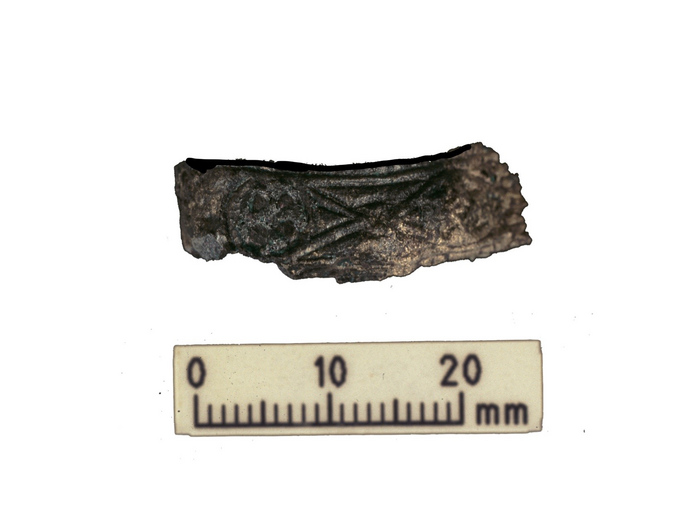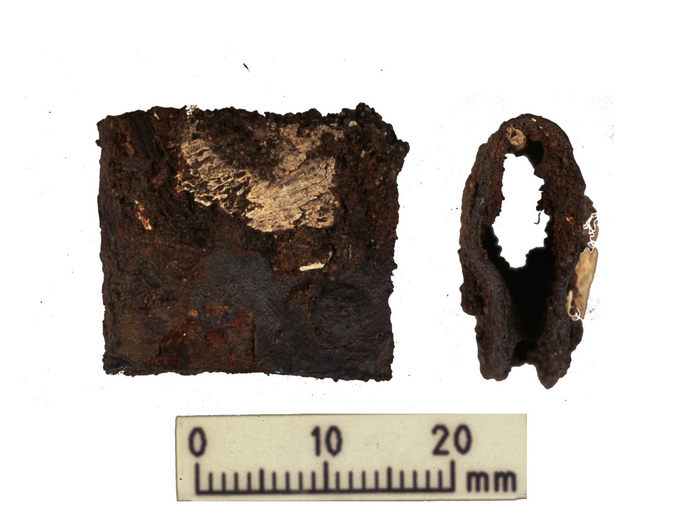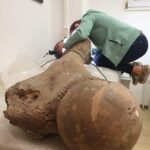First solid scientific evidence that Vikings brought animals to Britain
Archaeologists have found what they say is the first solid scientific evidence suggesting that Vikings crossed the North Sea to Britain with dogs and horses.

Research led by Durham University, UK, and the Vrije Universiteit Brussels, Belgium, examined human and animal remains from Britain’s only known Viking cremation cemetery at Heath Wood, in Derbyshire.

Scientists looked at strontium isotopes contained within the remains. Strontium is a natural element found in different ratios across the world and provides a geographical fingerprint for human and animal movements.
Their analysis showed that within the context of the archaeology, one human adult and several animals almost certainly came from the Baltic Shield area of Scandinavia, covering Norway and central and northern Sweden, and died soon after arrival in Britain.

The researchers say this suggests that Vikings were not only stealing animals when they arrived in Britain, as accounts from the time describe, but were also transporting animals from Scandinavia, too.

As the human and animal remains were found in the remnants of the same cremation pyre, the researchers believe the adult from the Baltic Shield region may have been someone important who was able to bring a horse and dog to Britain.
The analysed remains are associated with the Viking Great Army, a combined force of Scandinavian warriors that invaded Britain in AD 865.
The findings are published in the scientific journal PLOS ONE.
Lead author Tessi Löffelmann, a doctoral researcher jointly working in the Department of Archaeology, Durham University, and the Department of Chemistry, Vrije Universiteit Brussels, said:
“This is the first solid scientific evidence that Scandinavians almost certainly crossed the North Sea with horses, dogs and possibly other animals as early as the ninth century AD and could deepen our knowledge of the Viking Great Army.”
“Our most important primary source, the Anglo-Saxon Chronicle, states that the Vikings were taking horses from the locals in East Anglia when they first arrived, but this was clearly not the whole story, and they most likely transported animals alongside people on ships.”
“This also raises questions about the importance of specific animals to the Vikings.”
The researchers analysed strontium ratios in the remains of two adults, one child and three animals from the Heath Wood site.
Strontium occurs naturally in the environment in rocks, soil and water before making its way into plants. When humans and animals eat those plants, strontium replaces calcium in their bones and teeth.
As strontium ratios vary in different parts of world the geographical fingerprint of the element found in human or animal remains can help show where they came from or settled.
Strontium ratios in one of the adults and the child showed that they could have been from the area local to the Heath Wood cremation site, southern or eastern England or from Europe, including Denmark and south-west Sweden which were outside of the Baltic Shield region.

But the remains of the other adult and all three animals – a horse, a dog and what the archaeologists say was possibly a pig – had strontium ratios normally found in the Baltic Shield area.
While the researchers say their findings suggest the horse and dog were transported to Britain, it may be that the pig fragment was a piece from a game or another talisman or token brought from Scandinavia, rather than a live pig. The remains had also been cremated and buried under a mound, which the researchers say could be a link back to Scandinavian rituals at a time when cremation was absent in Britain.
Research co-author Professor Janet Montgomery, in the Department of Archaeology, Durham University, said:
“Our study suggests that there are people and animals with different mobility histories buried at Heath Wood, and that, if they belonged to the Viking Great Army, it was made up of people from different parts of Scandinavia or the British Isles.”
“This is also the first published strontium analysis on early medieval cremated remains from Britain and shows the potential that this scientific method has to shed further light on this period in history.”
The research team also included archaeologists from the University of York, UK, who excavated the Heath Wood cemetery between 1998 and 2000, and the Université Libre de Bruxelles, Belgium.
Professor Julian Richards, of the Department of Archaeology, University of York, who co-directed the excavations at the Heath Wood Viking cemetery, said:
“The Bayeux Tapestry depicts Norman cavalry disembarking horses from their fleet before the Battle of Hastings, but this is the first scientific demonstration that Viking warriors were transporting horses to England two hundred years earlier.”
“It shows how much Viking leaders valued their personal horses and hounds that they brought them from Scandinavia, and that the animals were sacrificed to be buried with their owners.”
The research was funded by Arts and Humanities Research Council (Northern Bridge) funding, the Vrije Universiteit Brussels, and The Rosemary Cramp Fund and the Institute of Medieval and Early Modern Studies, both Durham University.
Press release from Durham University.
———————————————————————————————————————————————————-
Vikings crossing the North Sea to Britain brought their horses, dogs and other animals
Evidence suggests Vikings arrived in Britain with animals from Scandinavia as early as the ninth century AD
An analysis of cremated bone fragments from burial mounds in Derbyshire, UK, provides the first solid evidence that Vikings crossed the North Sea with horses, dogs and other animals as early as the ninth century AD. The study is published in the open access journal PLOS ONE by Tessi Löffelmann of the University of Durham, UK, the Vrije Universiteit Brussels, Belgium, and colleagues. The researchers analyzed samples of human and animal remains, finding that they most likely originated from Scandinavia and that they died soon after arrival in Britain.
Heath Wood in Derbyshire has 59 burial mounts, twenty of which have been investigated, mostly in the 1940s and 50s. A contemporary source states that in AD 873, the Viking Great Army went to winter in Repton, close to Heath Wood. Remains there have been carbon dated to between the eighth and tenth centuries, but the origins have not been clear.
The researchers sampled small, cremated fragments of femur and cranium bones from the remains of two adults and one juvenile, as well as three animal remains: a horse, a dog and probably a pig. The fact that these remains were cremated suggests a strong Scandinavian influence as inhumation burial was the contemporary mode in Britain.
Samples were tested to determine ratios for strontium — a trace element present in rocks, soil, waters, plants, and animals — and these ratios were compared with those in the local area. The strontium in one adult and the animals differed from local strontium ratios, while the other adult and infant human samples were consistent with local ratios. These data suggest that there are people with different histories at the burial site, and if they belonged to the Great Viking Army, this band was made up of different populations.
The authors suggest that their research presents the first solid evidence for the transport of animals from Scandinavia to the heart of England in the ninth century. This differs from contemporaneous reports in the Anglo-Saxon Chronicle, which states that horses were taken by the Scandinavians from the local population in eastern England upon arrival.
The authors add: “Our study shows for the first time that Vikings brought animals, specifically horses and dogs, to Britain in the 9th century. Most likely, they were travelling alongside humans on ships.”
Bibliographic information:
Löffelmann T, Snoeck C, Richards JD, Johnson LJ, Claeys P, Montgomery J (2023) Sr analyses from only known Scandinavian cremation cemetery in Britain illuminate early Viking journey with horse and dog across the North Sea. PLoS ONE 18(2): e0280589. https://doi.org/10.1371/journal.pone.0280589
Press release from PLoS.


